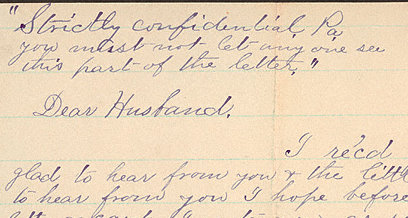We’re in the middle unit of the methods course, where each week is a different sandbox to play in. I have to admit, that sounds all well and good, but I can tell that my students are feeling a little unmoored and I think they miss the sense of structure that the first part of the course had. It’s not clear to them what they’re supposed to “do” now. No one’s really given them permission or opportunity to just play and mess around before. It might not be clear to them that this is something you only learn by doing. I will have to remember next time to be more up-front in the syllabus that this is my expectation for the middle unit of the course. I just hope that having clarified expectations will be as freeing as I want it to be. One of my new mantras is “the most effective leader is not one who fills space, but one who opens it.”[1]

We’re making use of the terrific scholarly essays and multimedia student exercises in GMU’s History Matters site under the “Making Sense of Evidence” tab. Last week it was Steven Stowe, “How to Make Sense of Letters & Diaries.” The idea was to show how to track down someone’s personal papers in an archives or other repository, interpret a manuscript collection finding aid, decipher old handwriting, read & interpret private writings, and talk about the issues involved in interpreting them and using them as historical evidence. Note to self: this is the perfect opportunity, next time around, to involve and invite an archivist or one of our reference librarians. I tend to be such a cowboy about those things and think I can just do it all myself, but my students would definitely benefit from talking to someone who does this for a living.
Here are some of the links I used in my prep, or showed in class:
Gorgeous penmanship, via Fountain Pen Network (click on the “business agreement”)
Two letters that I printed in color as sort of “facsimilies” and had them decipher in groups in class – one from DocSouth, written by UNC Chapel Hill undergraduate Rufus Patterson in 1849, and the other from the collection of Oblinger letters on the Nebraska Homesteading American Memory site. I chose the one from Laura Oblinger back home to her husband (a fragment is the post’s photo, above), describing the medical treatment she’s getting for her broken arm and oh by the way announcing to him that she’s pregnant (“Encient” is how she puts it, which is a little ambiguous).
There’s also a cool blog called Early Modern Paleography featuring handwritten manuscripts from the Beineke (now defunct? alas – doesn’t seem to have posted since December 2010, I kinda miss it)
You can see old examples of 19th-century script instruction manuals here from the Ames Historical Society
We also watched a clip from the PBS film, A Midwife’s Tale, the opening sequence showing Laurel Thatcher Ulrich at work puzzling over the diary, and we talked about some of the online diary/manuscript collections that Stowe mentions, including Ballard’s diary on dohistory.org with its freaky-cool java applet “Magic Lens” and (a personal favorite of mine) the Journals of Lewis & Clark.
Deciphering in class seemed to go well. One student even found that she had a cache of her grandfather’s handwritten letters from the 1960s at her house and brought one in for us to look at. She is planning, in lieu of this unit’s paper, to catalog that collection and write a finding aid. Another example of spontaneous learning opportunities we are snatching on the fly.
[1] Parker Palmer, quoted by John Tagg in The Learning Paradigm College (Anker, 2003), 338.













